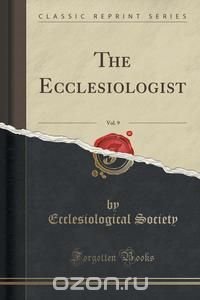Excerpt from The Ecclesiologist, Vol. 9
Such, to the letter, were the venerable remains of the Abbey of S. Augustine at Canterbury found to be, when it had been determined to rescue them from their desecrated state, and to give them a new life as a Missionary College for the English branch of the Church Catholic. A brief retrospect at the state of degradation to which the abbey had been reduced, must precede the account we propose to give in this article of the restored buildings.
We need not here recount the particulars of the miserable desecration which befell the Abbey of S. Augustine at and after the Reformation. The year 1844 found not one of its buildings entire, - some standing as shapeless masses of ruin, others turned to account for secular or profane uses, and the vast site itself divided among numerous embarrassed proprietors: - in short the fate of sacrilege written in letters over the doomed spot. But the desecration of one portion of the abbey used to excite more warmly the sorrow, or rather indignation, of the visitor. The north-western gateway - one of the fairest visions of beauty left us by the Middle-Pointed age - and a group of buildings adjoining its south side, in which the gable of a chapel was conspicuous, contained the apparatus of a brewery and the fittings of a tap-room, and the conveniences of a low house of entertainment: within the precincts tea-gardens occupied the cleared area, smoking-booths nestled in the recesses of ruined masonry; and the very wall of the famous church itself, smoothed and blackened, was made a fives-court. But this property was offered for sale, and bought by one whose sole object it was to rescue from desecration what bad been once.devoted to God. and to restore it to His service. At the same time a grievous and daily increasing want in the institutions of our Church, made itself more and more clamorous for satisfaction. An individual clergyman, to whom the Colonial Church is deeply indebted, had laboured earnestly to found an institution for the better training of our missionaries. The munificence of an individual layman had just reclaimed a site rendered peculiarly sacred by missionary associations. On the one hand then was a dedicated site waiting for an object, on the other a scheme wanting just such a local habitation. May we not say it was providential that the two were combined, and the result is that the site of the abbey of the apostle of England is in 1848 - twelve centuries afterwards - the site of the first regular missionary college of the English Church ?
The aspect which the exterior of S. Augustine's presents, as you approach it through the somewhat narrow street upon which its western side abuts, is assuredly no ordinary one. Taken merely as an architectural combination, telling its own tale by the unmistakeable character impressed on the several parts which here come into view, it possesses in a high degree that first qualification of every really artistic production, that it needs no expounder.
About the Publisher
Forgotten Books publishes hundreds of thousands of rare and classic books. Find more at www.forgottenbooks.com
This book is a reproduction of an important historical work. Forgotten Books uses state-of-the-art technology to digitally reconstruct the work, preserving the original format whilst repairing imperfections present in the aged copy. In rare cases, an imperfection in the original, such as a blemish or missing page, may be replicated in our edition. We do, however, repair the vast majority of imperfections successfully; any imperfections that remain are intentionally left to preserve the state of such historical works. Это и многое другое вы найдете в книге The Ecclesiologist, Vol. 9 (Classic Reprint) (Ecclesiological Society)
